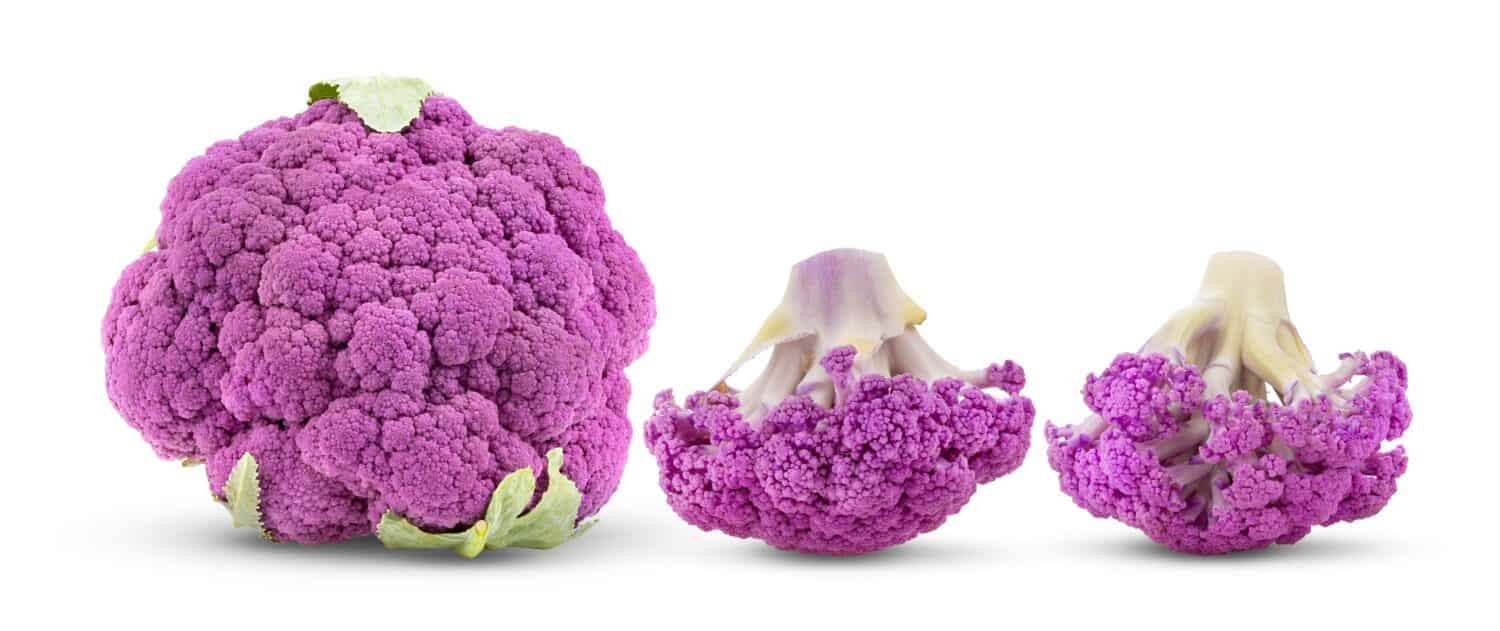Summertime is garden time for many people. And one of the joys of starting a garden is getting the opportunity to harvest your own produce. However, not every vegetable is meant to get harvested in July. Some will not taste well (or survive) if they get grown and harvested in the peak of summer. Here are eight vegetables to avoid harvesting and eating in July.
1. Cauliflower
While cool-season crops are delicious, they don’t always work in summer despite our best efforts. Cauliflower (Brassica oleracea var. botrytis) is one of those vegetables that appreciates mild temperatures. High temperatures can cause the cauliflower head to become loose and develop a grainy texture. That will detract from its appearance and flavor. Plant your tasty cauliflower earlier or later in the season so you can harvest it for peak taste.
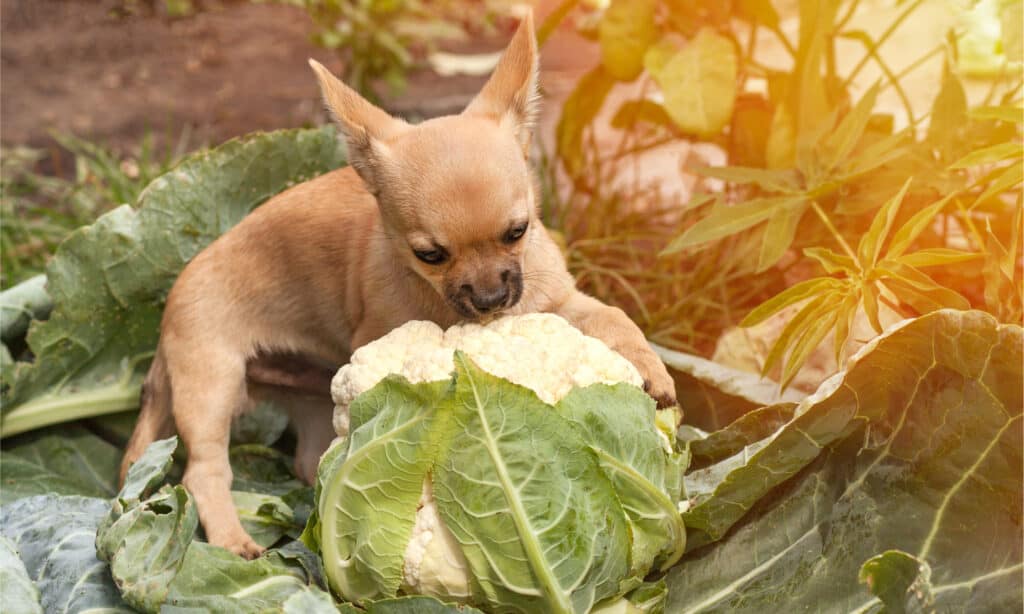
You (and your dogs) will like the flavor of your cauliflower better if you avoid harvesting it in July.
©victoriyasmail/Shutterstock.com
2. Cabbage
Cabbage (Brassica oleracea var. capitata) has dense leaves and a crisp texture. It is a staple in many dishes. But, during the heat of July, cabbage faces challenges. High heat may lead to wilting of the outer leaves, which may cause the head to become smaller and less firm. Additionally, the cabbage’s flavor may become more pronounced and bitter. Make sure to plant cabbage when you can harvest it in the early summer or late fall for the best-tasting result.

Harvest your cabbage heads later in the summer for peak flavor.
©iStock.com/Lusyaya
3. Brussel Sprouts
Another member of the Brassica family is Brussel sprouts (Brassica oleracea var. gemmifera). They resemble tiny cabbages, but they need a lengthy season to grow. Even if your brussel sprout heads are starting to form in July, you will have to be patient and wait to harvest them. If you harvest them in the hot summer months in an attempt to get younger vegetables, they may suffer from heat stress. And that means an unpleasant flavor for you.

Brussels sprouts taste best when they get harvested in cooler weather.
©Anton Havelaar/Shutterstock.com
4. Broccoli
Broccoli (Brassica oleracea var. italica) is a highly nutritious and versatile vegetable. This close relative of cauliflower is not well-suited for the hot weather of July. The high temperatures can lead to uneven and stunted head development. And that results in smaller and less flavorful florets. Your broccoli will still grow well as long as it gets decently established before the heat hits. But for the best-tasting broccoli, wait for a cooler season before harvesting.
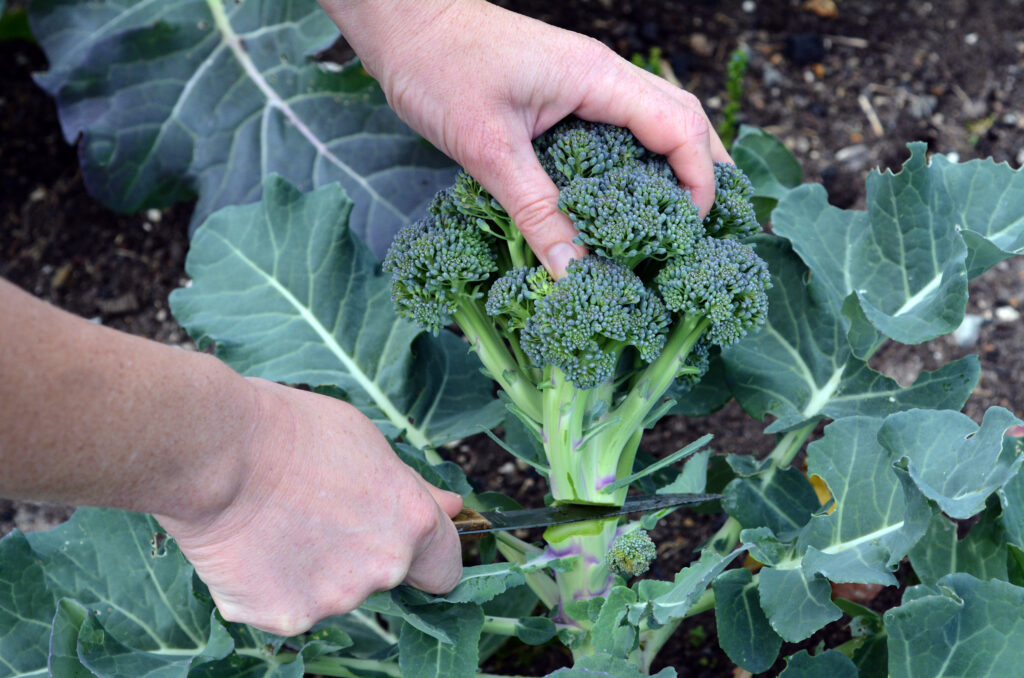
For the best-tasting broccoli, wait for a cooler season before harvesting.
©ChameleonsEye/Shutterstock.com
5. Bok Choy
Otherwise known as Chinese cabbage, bok choy (Brassica rapa subsp. chinensis) is a fast-growing vegetable. It has succulent white stems and dark green leaves. Unfortunately, it is not heat-tolerant and will bolt quickly in high temperatures. When that happens, the flavor of the leaves diminishes greatly, and you won’t get a consistent harvest. It is best to wait until August or September to plant another round.
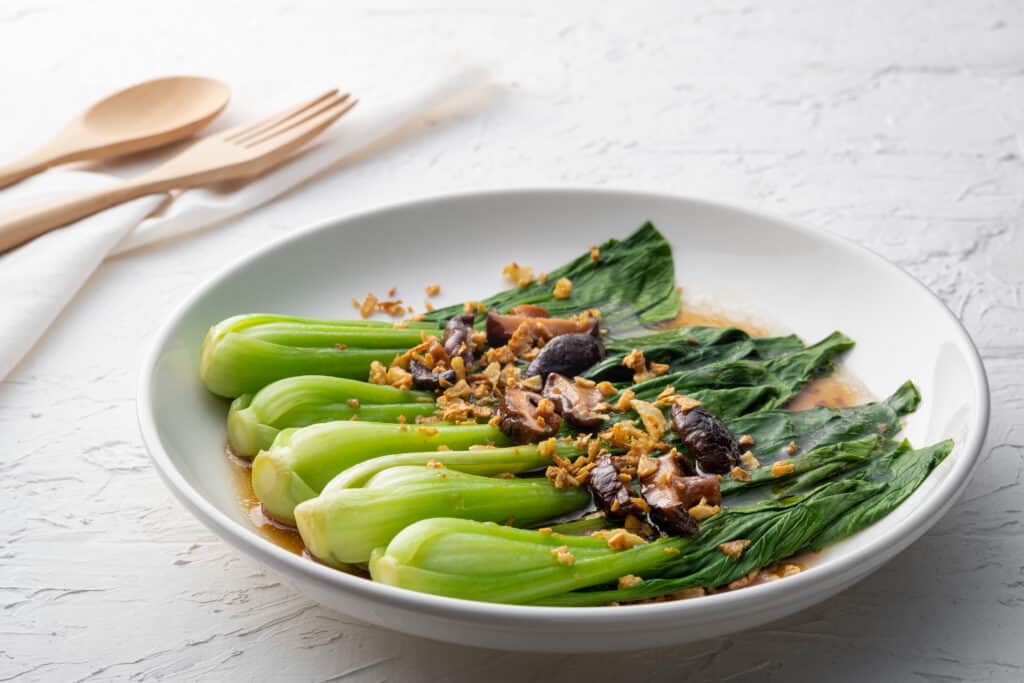
Bok choi is not heat-tolerant and will bolt quickly in high temperatures.
©Kritchai7752/Shutterstock.com
6. Mustard Greens
If you haven’t tried mustard greens (Brassica juncea) yet, you should consider adding them to your garden…just not in July. This delicious green is known for its peppery and zesty flavor. It makes a popular addition to salads and cooked dishes. But in the heat of July, they tend to develop a more intense and pungent taste. Of course, that is if the plants grow and don’t go straight to bolt. So, if you don’t want to waste seeds and prefer milder mustard greens, harvest them earlier in the spring or later in the summer when the weather is cooler.
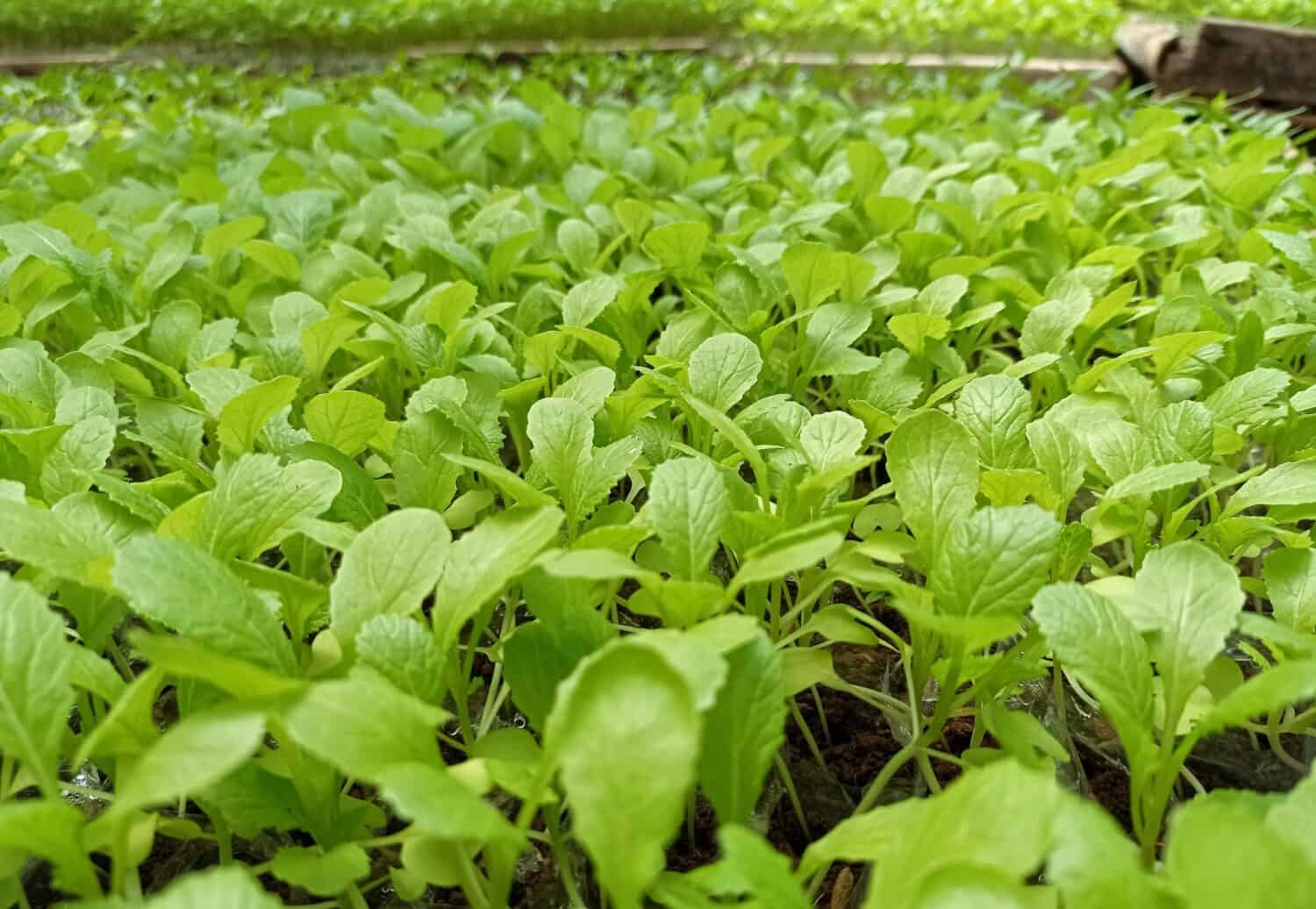
Mustard greens don’t like hot weather and will bolt quickly in July.
©ByPict projects/Shutterstock.com
7. Cilantro
You either love or hate cilantro (Coriandrum sativum); there isn’t much of a middle ground with most people. But if you want to continue enjoying it, consider waiting until after the heat of July has passed. It is infamous for its tendency to bolt rapidly in hot weather. Bolting causes the plant to shift its energy into seed production. That means the leaves have less flavor, and they may even become a little bitter once the seeds begin to form. You can attempt to plant them in a shaded area to try for a continuous harvest. However, it is best to wait until the heat passes.
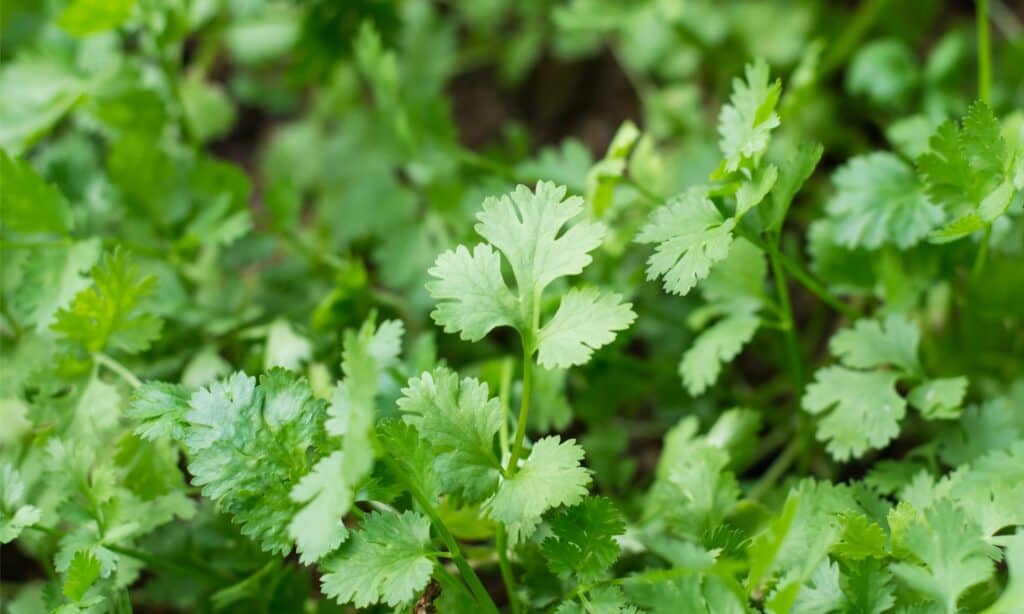
Cilantro is also known as coriander. It makes a flavorful addition to many dishes…as long as you enjoy the taste!
©iStock.com/Tevarak
8. Parsnips
Sometimes it can get difficult to wait for your root vegetables to finish growing. Unfortunately, parsnips (Pastinaca sativa) take a little longer to develop. The flavorful root vegetable isn’t ready until later in the year. And since they are cool-season crops, the roots actually become more flavorful after a mild frost. So try to wait for them to finish growing before you pull them out of the ground!

Parsnips are cool-season crops: the roots actually become more flavorful after a mild frost.
©iStock.com/Qwart
Thank you for reading! Have some feedback for us? Contact the AZ Animals editorial team.

